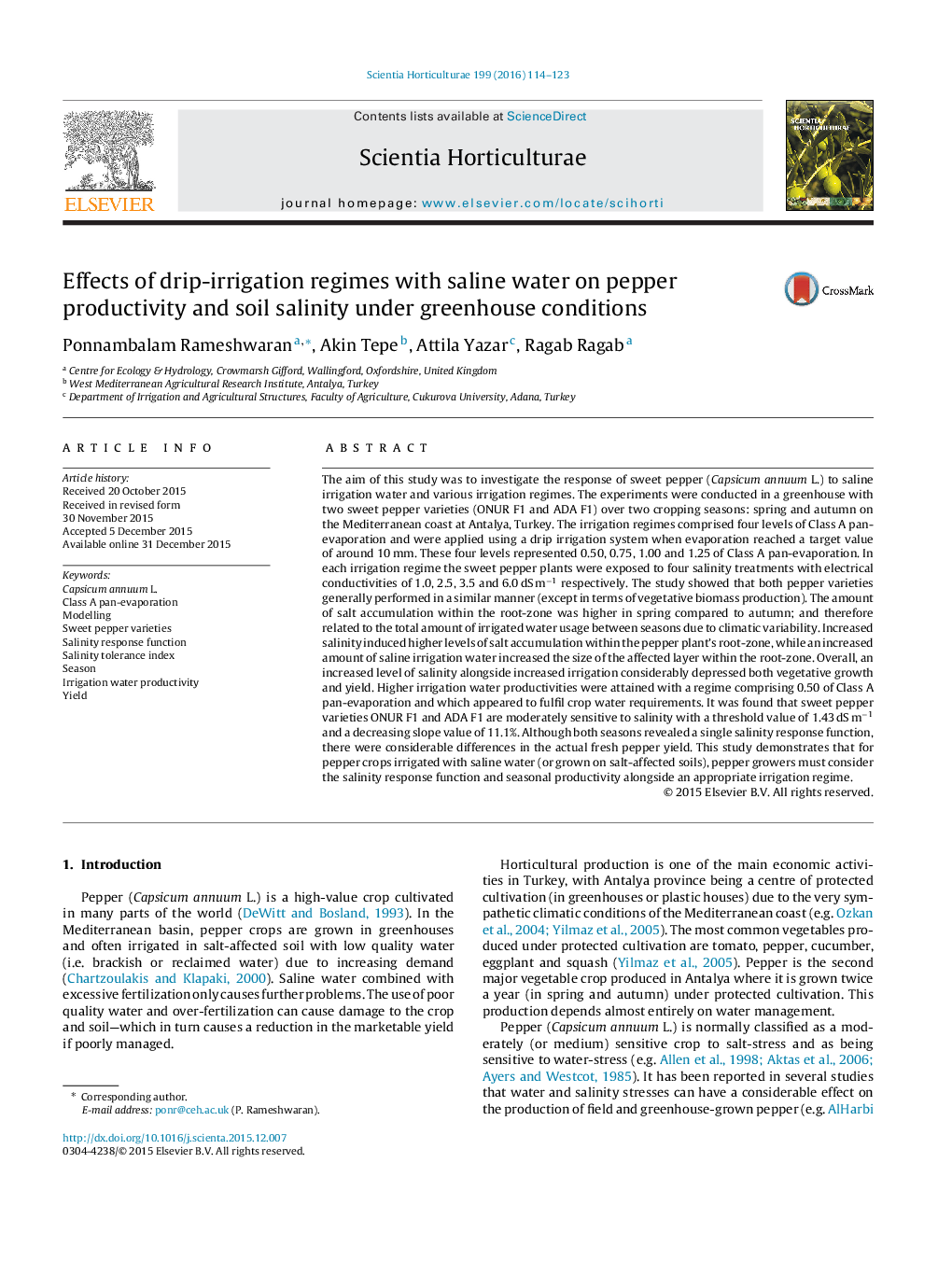| کد مقاله | کد نشریه | سال انتشار | مقاله انگلیسی | نسخه تمام متن |
|---|---|---|---|---|
| 4566121 | 1628799 | 2016 | 10 صفحه PDF | دانلود رایگان |
• Sweet pepper varieties ONUR F1 and ADA F1 are moderately sensitive to salinity.
• Increased level of salinity and irrigation considerably depressed growth and yield.
• Threshold of 1.43 dS m−1 and slope of 11.1% obtained for salinity function.
• 50% of Class A pan-evaporation irrigation appeared to fulfil crop water requirement.
• There are considerable differences in yield between Spring and Autumn seasons.
The aim of this study was to investigate the response of sweet pepper (Capsicum annuum L.) to saline irrigation water and various irrigation regimes. The experiments were conducted in a greenhouse with two sweet pepper varieties (ONUR F1 and ADA F1) over two cropping seasons: spring and autumn on the Mediterranean coast at Antalya, Turkey. The irrigation regimes comprised four levels of Class A pan-evaporation and were applied using a drip irrigation system when evaporation reached a target value of around 10 mm. These four levels represented 0.50, 0.75, 1.00 and 1.25 of Class A pan-evaporation. In each irrigation regime the sweet pepper plants were exposed to four salinity treatments with electrical conductivities of 1.0, 2.5, 3.5 and 6.0 dS m−1 respectively. The study showed that both pepper varieties generally performed in a similar manner (except in terms of vegetative biomass production). The amount of salt accumulation within the root-zone was higher in spring compared to autumn; and therefore related to the total amount of irrigated water usage between seasons due to climatic variability. Increased salinity induced higher levels of salt accumulation within the pepper plant’s root-zone, while an increased amount of saline irrigation water increased the size of the affected layer within the root-zone. Overall, an increased level of salinity alongside increased irrigation considerably depressed both vegetative growth and yield. Higher irrigation water productivities were attained with a regime comprising 0.50 of Class A pan-evaporation and which appeared to fulfil crop water requirements. It was found that sweet pepper varieties ONUR F1 and ADA F1 are moderately sensitive to salinity with a threshold value of 1.43 dS m−1 and a decreasing slope value of 11.1%. Although both seasons revealed a single salinity response function, there were considerable differences in the actual fresh pepper yield. This study demonstrates that for pepper crops irrigated with saline water (or grown on salt-affected soils), pepper growers must consider the salinity response function and seasonal productivity alongside an appropriate irrigation regime.
Figure optionsDownload as PowerPoint slide
Journal: Scientia Horticulturae - Volume 199, 16 February 2016, Pages 114–123
